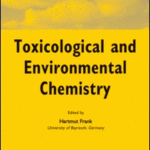 Thimerosal (ethylmercurithiosalicylic acid), an ethylmercury (EtHg)-releasing compound (49.55% mercury (Hg)), was used in a range of medical products for more than 70 years. Of particular recent concern, routine administering of Thimerosal-containing biologics/childhood vaccines have become significant sources of Hg exposure for some fetuses/infants. This study was undertaken to investigate cellular damage among in vitro human neuronal (SH-SY-5Y neuroblastoma and 1321N1 astrocytoma) and fetal (nontransformed) model systems using cell vitality assays and microscope-based digital image capture techniques to assess potential damage induced by Thimerosal and other metal compounds (aluminum (Al) sulfate, lead (Pb)(II) acetate, methylmercury (MeHg) hydroxide, and mercury (Hg)(II) chloride) where the cation was reported to exert adverse effects on developing cells. Thimerosal-associated cellular damage was also evaluated for similarity to pathophysiological findings observed in patients diagnosed with autistic disorders (ADs). Thimerosal-induced cellular damage as evidenced by concentration- and time-dependent mitochondrial damage, reduced oxidative-reduction activity, cellular degeneration, and cell death in the in vitro human neuronal and fetal model systems studied. Thimerosal at low nanomolar (nM) concentrations induced significant cellular toxicity in human neuronal and fetal cells. Thimerosal-induced cytoxicity is similar to that observed in AD pathophysiologic studies. Thimerosal was found to be significantly more toxic than the other metal compounds examined. Future studies need to be conducted to evaluate additional mechanisms underlying Thimerosal-induced cellular damage and assess potential co-exposures to other compounds that may increase or decrease Thimerosal-mediated toxicity.
Thimerosal (ethylmercurithiosalicylic acid), an ethylmercury (EtHg)-releasing compound (49.55% mercury (Hg)), was used in a range of medical products for more than 70 years. Of particular recent concern, routine administering of Thimerosal-containing biologics/childhood vaccines have become significant sources of Hg exposure for some fetuses/infants. This study was undertaken to investigate cellular damage among in vitro human neuronal (SH-SY-5Y neuroblastoma and 1321N1 astrocytoma) and fetal (nontransformed) model systems using cell vitality assays and microscope-based digital image capture techniques to assess potential damage induced by Thimerosal and other metal compounds (aluminum (Al) sulfate, lead (Pb)(II) acetate, methylmercury (MeHg) hydroxide, and mercury (Hg)(II) chloride) where the cation was reported to exert adverse effects on developing cells. Thimerosal-associated cellular damage was also evaluated for similarity to pathophysiological findings observed in patients diagnosed with autistic disorders (ADs). Thimerosal-induced cellular damage as evidenced by concentration- and time-dependent mitochondrial damage, reduced oxidative-reduction activity, cellular degeneration, and cell death in the in vitro human neuronal and fetal model systems studied. Thimerosal at low nanomolar (nM) concentrations induced significant cellular toxicity in human neuronal and fetal cells. Thimerosal-induced cytoxicity is similar to that observed in AD pathophysiologic studies. Thimerosal was found to be significantly more toxic than the other metal compounds examined. Future studies need to be conducted to evaluate additional mechanisms underlying Thimerosal-induced cellular damage and assess potential co-exposures to other compounds that may increase or decrease Thimerosal-mediated toxicity.
Gaier, DA. King,PA. Geier,MR. Mitochondrial dysfunction, impaired oxidative-reduction activity, degeneration, and death in human neuronal and fetal cells induced by low-level exposure to thimerosal and other metal compounds.Toxicological & Environmental Chemistry, Volume 91, Issue 4 June 2009 , pages 735 – 749. View Abstract





